PRODUCT LIST
Overview of Green Energy Strategies and Techniques for Modern Data Centers
WP0014_en-us
Document Author:
Delta Power Solutions
Product covered:
Datacetner Solutions
Introduction
Data centers ensure the operation of critical business IT equipment including servers, networking and storage devices. Even as data centers support billions of online users worldwide, the data centers also generate large amounts of energy consumption. Tangible improvements to data centers energy efficiency must therefore be developed to realize significant energy savings. Existing data center operators must adopt high efficiency in their data center management in order to benefit both "environmentally" and "economically".
The first step in increasing the energy efficiency of data centers is a careful assessment of Power Usage Effectiveness (PUE). Simply put, PUE is the total power of the data center divided by the amount of power used by IT, or total infrastructure power divided by IT equipment power. PUE is an indicator defined by a working group made up of government and industry leaders convened by Green Grid. As it offers a high level of confidence and can measure the energy efficiency of data centers, it can be applied to all standard data centers. It aims to establish a "consistent and repeatable indicator" that data center operators can use to continuously monitor and improve their energy consumption. Research carried out by the Uptime Institute in 2014 found that the industry average for PUE was 1.7. This was higher than the 1.67 in 2013 but lower than the 1.8 in 2012, indicating that there is room for further improvement in data center energy efficiency (see Fig. 1).

Figure 1: Average data center PUE report, 2011 ~ 2014
Source: 2014 Data Center Industry Survey Results by Uptime Institute
The rise of big data and Internet-of-Things (IoT) in recent years has spurred the continued construction of data centers. Growing environmental awareness has highlighted the importance of "data center energy saving" as well. First, power costs are second only to personnel costs in their share of a data center's Total Cost of Ownership (TCO). Data centers are often accused of being "non-environmentally friendly" (see the annual ratings published by Greenpeace). In reality, data centers in the U.S., for example, account for just 2% of total energy consumption and this is lower than the world average. This showed that many data centers still use various means to achieve energy savings and carbon reduction.
Many data centers, however, still have not adopted any efficiency indicators to date, so there is no standard for energy savings. Despite the ongoing debate over PUE, it is still the primary method of measuring the efficiency of data center infrastructure and offers a useful reference during the development and execution of greening strategies at data centers.
Green Data Center Strategy
According to the article "Characteristics of Low Carbon Data Centres" published on Nature Climate Change, the efficiency and carbon emissions of IT equipment such as servers, storage, communications, infrastructure (fans, cooling, pumps, power distribution) are key factors that influence the production of greenhouse gases (GHG) by data centers. Some of the suggestions on improving energy consumption from this article can make a significant difference in data center green projects.
The top seven data center green strategies are listed below. They will help improve data center energy consumption and optimize PUE:
Strategy 1: Regular hardware audits
Global IT giants such as Facebook, Google and Apple are all continuing to study ways to improve data center efficiency. Their methods may seem very impressive, but the first strategy suggested here is something most businesses can do—the routine inspection of all existing hardware.
Data centers usually have a lot of unnecessary IT equipment. ‘Comatose servers’ refer to servers that are still plugged into the rack but are no longer in actual use. They still take up valuable rack space, consume large amounts of energy and degrade the PUE. The Uptime Institute conducted a study in 2013 to see how prevalent the problem was and found that around half of respondents did not carry out systematic inspections or un-plug unneeded servers. A U.S. EPA sample study also found that most data centers lacked effective means to monitor all of their infrastructure and IT load on-site. This showed there is still a long way to go on improving data center energy consumption.
At Barclays Bank for example, after the bank unplugged 9,124 unnecessary servers in 2013, it realized savings in power, cooling and rack space. Processing power was increased and its power bill was reduced by $4.5 million. There are therefore clear benefits to reducing the number of servers.
Apart from IT equipment audits, non-IT infrastructure such as the data center's uninterruptible power supplies (UPS) must be regularly inspected as well. Unlike conventional transformer-based monoblock UPS, the current trend is to adopt transformer-less modular UPS. The two conditions below should be considered during UPS selection to deliver data center energy savings:
- Scalability: Modular UPS allows the number of power supply modules to be increased to keep pace with data center expansion. It does not require a large amount of capital to be invested when the server room is being set up and does not take up extra space. A "seamless expansion" of UPS can therefore be achieved while the server business continues to grow (Fig. 2). Apart from additional power modules, UPS must also support multiple devices running in parallel to allow for an expansion in scale.

Figure 2: Modular UPS to satisfy the data center's demand for seamless expansion
- High efficiency at light load: Data centers usually install N+X redundant power supplies or even 2N dual bus to guarantee reliability. This means the load percentage is usually around 30 ~ 40% or even lower. The high efficiencies touted by UPS at "full load" is therefore unlikely to be realized. A report by the market research firm Gartner in 2013 stated that, apart from UPS efficiency at full load, attention should also be paid to the efficiency curve (see Fig. 3) between 20 ~ 100% load in an effort to realize the ideal state of "high efficiency at light load". Take a high-efficiency modular UPS with a capacity of 200kVA for example. If the difference in daytime and nighttime load of a data center is taken into account, then a high-efficiency UPS consumes around 5% less power than a conventional UPS.

Figure 3: UPS efficiency curve
|
Considered UPS 200kVA |
High-Efficiency Modular UPS |
Legacy UPS |
|
|
Power provided during day, 50% load |
100 |
100 |
kW |
|
Additional losses from efficiency difference |
0% |
4% |
|
|
Total consumption |
100 |
104 |
kW |
|
Day consumption, considered 14 hrs |
1,400 |
1,456 |
kWh |
|
Power provided during night, 30% load |
60 |
60 |
kW |
|
Additional losses from efficiency difference |
0% |
7% |
|
|
Total consumption |
60 |
64.2 |
kW |
|
Night consumption, considered 10 hrs |
600 |
642 |
kWh |
|
Daily (day+night) consumption |
2,000 |
2,098 |
kWh |
|
Annual consumption, 365 days |
730,000 |
765,770 |
kWh |
|
Lifetime consumption, 8 years |
5,840,000 |
6,126,160 |
kWh |
|
Lifetime electricity cost, 0.1 EUR/kWh |
584,000 |
612,616 |
EUR |
|
Power Savings for 8-year operation |
286,160 |
kWh |
|
|
Electricity Cost Savings for 8-year operation |
28,616 |
EUR |
|
|
Percentage of Savings |
5% |
||
Table 1: UPS electricity expense calculation and comparison
Strategy 2: Routine PUE measurement
As mentioned above, PUE is the main industry standard for quantifying energy efficiency. In most cases this is due to its simplicity and practicality. It is, however, rarely implemented in several industries under observation. Irregular records are unable to provide an accurate picture of energy usage, so many industry experts are pushing for routine PUE measurements to monitor how data center PUE fluctuates with the seasons or other factors. To accurately measure total power in real-time and record the actual PUE, sensors must be installed at key measurement points to record the actual power (kW and kVA). Energy usage within a certain period of time should also be recorded to deliver the best analysis (Fig. 4).

Figure 4: PUE monitoring dashboard
Strategy 3: Upgrade hardware and improve server efficiency
Server efficiency has a direct impact on PUE and is crucial to PUE improvement. However, several factors must be considered to accurately assess server efficiency. We can start from CPU utilization. For poor CPUs that give poor performance, virtualization technology can greatly increase CPU performance and server efficiency without having to replace the server; the load and power consumption of each rack should also be included in the efficiency calculations. Blade servers are one way of increasing rack density (each rack can hold up to 1,024 CPU cores) while reducing the cooling and power requirements.
The consolidation and virtualization of physical servers can increase data center efficiency, so these should be considered by IT administrators during hardware upgrades. Research showed that consolidating servers has the following benefits:
- Up to US$560 in savings per server each year
- Reduced heat production and the associated cooling costs
- Release additional space and expand processing capacity
Note that the one downside of virtualization and blade servers is the extra heat and cooling requirements. There are several solutions in use that now include air flow management techniques such as "cold and hot aisle containment" and "in-row cooling" (Fig. 5). These are all designed to solve the problem of high density in data centers.

Figure 5: Cold-aisle containment and in-row cooling technology for high power density data centers
Strategy 4: Improving data center cooling efficiency
Cooling is second only to IT load in terms of energy consumption. The installation of an energy monitoring and measurement mechanism is therefore critical to understanding how cooling affects overall PUE and improvement techniques. Please see the following four techniques
The Google approach
Google is now a leader in data center greening with a 1.12 PUE that makes it the envy of the industry. The latest Android Emotions report revealed that new Google AI products are now looking for ways to reduce PUE even further. Google even shared the five key techniques used by its data center managers and operators to reduce PUE in the blog post Efficiency: How others can do it. The three related approaches to improve data center cooling efficiency were as follows:
- Manage airflow: Well-designed hot and cold aisle containment avoids the mixing of hot and cold air, making the cooling system more efficient. To eliminate hot spots and set up an ideal thermal management, temperature sensors can be placed in appropriate locations and computer simulations can then be used to identify hot spots and eliminate them. EPA research found that an effective hot and cold air containment system reduced fan power consumption by 25% and chiller power consumption by 20%.

Figure 6: Example of hot aisle containment - Increase ambient temperature: Google has shattered the myth that data centers must be kept at 70°F and verified that cold aisle containment can operate at 80°F. Increasing the temperature while turning off re-heaters and dehumidifiers are cost effective methods of reducing energy consumption.
- Free cooling: The chillers in cooling systems consume large amounts of energy. A free cooling system can be used if the weather conditions apply. Cold air is drawn in from the outside and used before being re-emitted outside. Other sources of free cooling include: Air from the outside, steam or setting up large heat storage devices.
Strategy 5: Increase data center temperature
Conventional wisdom on data center temperatures meant that IT administrators have long been unwilling to increase their temperature. However, ASHRAE's latest recommendations on data center operating temperatures set the range as 18℃ ~ 27℃ (64.4°F ~ 80.6°F). ASHRAE also raised the recommended range for humidity, as well. The changes mean that data centers will be able to achieve more savings on cooling costs and better satisfy the requirements for free cooling.
If the data center temperature is too conservative and kept too low, then this will increase operating costs through worse PUE or higher cooling costs. An Intel study also found that increasing the data center ambient temperature by 1℃ reduced cooling costs by around 4%. This has led to the development of several high-temperature energy-saving products such as:
- High-temperature energy-saving server: "High temperature" means that the server can run reliability without cooling between temperatures of 5℃ to 47℃. As the server can tolerate higher data center temperatures, this means it requires less cooling. When compared to conventional servers, high-temperature energy-saving servers offer high temperature tolerance, low power consumption, and ease of deployment. They can therefore make a major contribution to data center energy-saving.
- High-temperature chilled water cooling system: Most heat in a data center is sensible heat and only a small amount of latent heat is present. This means there is very little demand for de-humidification. The incoming water temperature for data center cooling unit can be increased from conventional 7℃. This means increased cooling from the chiller, improved energy efficiency and more energy savings from the AC system.
Strategy 6: Introduction of DCIM System
The Data Center Infrastructure Management (DCIM) system was developed to help data center managers and operators achieve more effective and comprehensive control and monitoring of the data center. DCIM can use a bird's eye view of the data center to help IT administrators plan, manage and respond to potential risks and reduce downtime. As previously described, low utilization in individual servers is a common problem among data centers. DCIM can increase efficiency by helping data center administrator identify comatose servers for re-assignment. It can also accurately measure asset utilization and energy consumption by the data center.

Figure 7: Display wall and rack management interface of the DCIM system
Strategy 7: Use clean, renewable energy sources
100% clean energy is a distant dream, but many businesses have adopted a "hybrid" strategy to approach this ideal. These include the use of renewable energy, on-site power generation and remote grids. IT giants such as Apple have installed 55,000 solar panels, eBay uses fuel cells at its Quicksilver plant in Utah, and Microsoft makes use of wind and solar power. Small and medium-sized businesses might be able to cooperate with their local utilities for access to clean electricity or renewable energy. They can also consider establishing new data centers near clean energy utilities.
Conclusion
The "Green Data Center Initiatives" requires a large amount of creativity and should not be constrained by traditional mindsets. There are many examples in the industry of the many tangible benefits offered by green data centers. PUE can provide a basis for measuring energy efficiency and is very important for creating a sustainable green data center. IT giants such as Google, Facebook, Apple and Microsoft have all invested millions towards the development of green data centers. Optimal solutions for green data centers that allow data centers to approach ideal PUEs have also been validated. The industry is unanimous in its belief that a total audit of IT infrastructure is needed to improve data center efficiency. Ordinary businesses can also use routine PUE measurements and administration tools (such as DCIM) to find and correct areas of low IT efficiency. By reducing carbon footprints and increasing the utilization of individual servers, the goals of PUE and ROI optimization can be achieved.
 Overview of Green Energy Strategies and Techniques for Modern Data Centers
- 1072,64 Kb
Document ID: WP0014_en-us
Overview of Green Energy Strategies and Techniques for Modern Data Centers
- 1072,64 Kb
Document ID: WP0014_en-usDocument Author: Delta Power Solutions











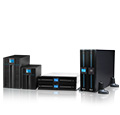

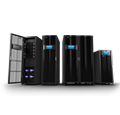

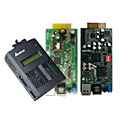


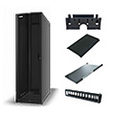
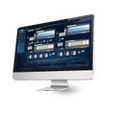
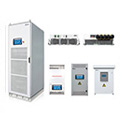
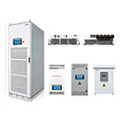















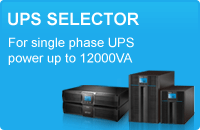
.gif)
